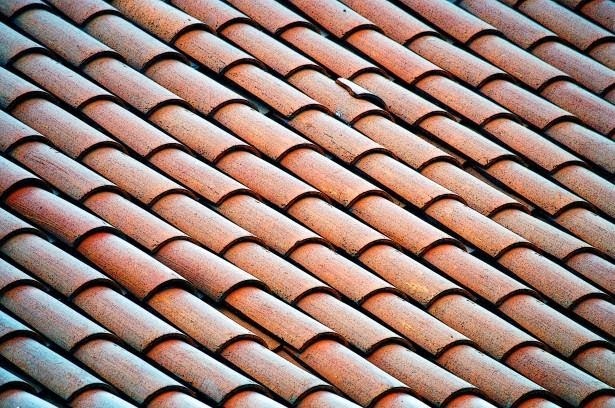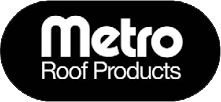Roof tiles are a great way to customize a home, but they vary in budget, durability, weight, and appearance. We break down the 9 most popular types of roof tiles below so that you can get a clear understanding of what sets each material apart.
1. Slate Roof Tiles

Slate is a natural stone with a unique, beautiful appearance. Slate provides some very dramatic color variations that only time and Mother Nature can produce. In addition, slate is a fire-resistant roofing material and is durable and long-lasting. It may be one of the classiest roofing materials in existence. The downside to slate is that it is extremely heavy and requires the structure to be reinforced in order to support the extra weight. It is also very expensive to install and difficult to handle which makes repairs a potential problem.
2. Clay Roof Tiles

Clay roof tiles have a long history. Why? Because the base material has always been readily accessible. The tiles were shaped by hand, sun-dried and then used on the roof. These days, the process today is mostly machine-driven, but the finished product is just as beautiful. Most of us are used to seeing a clay roof in the shape of barrel tiles or flat tiles. They come in a variety of colors and are sealed to resist absorbing water. Clay tiles are extremely heavy, are prone to breaking if not carefully worked on, and require installers with extensive experience. Like concrete and slate, a roof with clay tiles will need substantial reinforcement to support the extra weight of the clay.
3. Cedar Shake Roof Tiles

Cedar shake roofing tiles have a timeless and natural appeal that can dramatically boost the aesthetics of a building while offering several benefits. One of the most significant is their rustic appearance. These tiles exude a warm, inviting look that can add character to a variety of architectural styles, from traditional to contemporary, hearkening back to tradition of old. Perhaps most importantly, cedar shake tiles are known for their natural resistance to insects and decay, thanks to the natural oils present in cedar wood.
That said, even though cedar is a great wood species, it still is wood, and wood requires maintenance. While cedar’s natural oils offer some protection against decay, these tiles still require regular maintenance to keep them in optimal condition. They need to be periodically cleaned, treated, and inspected to prevent issues like moss and mildew growth. Also being wood, there is a much higher susceptibility to fire. While cedar has some natural fire-resistant properties, it is not as fireproof as some other roofing materials like metal or concrete. This can be a significant concern in areas prone to wildfires or where building codes require higher fire resistance.
4. Concrete Roof Tiles

Concrete roof tiles
were developed in the middle of the 19th century in Bavaria; the basic components of concrete were inexpensive and easy to find. These early tiles were made by hand but as time went on, modern production methods have made concrete roof tiles one of the least expensive roof tile options on the market. Concrete tiles are made to look like wood shakes, clay tiles, and slate tiles and are very attractive. Concrete is very heavy and requires a roof structure that has been reinforced to handle the added weight that comes with these stone roofs. They also need roofing crews that are familiar with the tools and procedures required to properly install concrete roof tiles. They have many of the same maintenance requirements as clay.
5. Composite Roof Tiles

Composite slate roof tiles, like Brava’s complete line of synthetic roof tiles, are made from a mixture of natural and man-made materials and have a long list of advantages over natural stone, wood, clay, metal or concrete tiles. They easily replicate the look of any tile roofing product with the advantage of offering custom color mixes for most patterns. They are lighter, come with good warranties and usually can be installed by most experienced roofing contractors.
6. Metal Roof Tiles

The most common materials used in metal roof tiles are copper, aluminum, zinc and steel. Of these materials, steel and aluminum are the most popular. Metal tiles are available in different patterns and shapes to imitate products such as barrel tiles (Spanish roofs), slate tiles, wood shake tiles, and even regular shingle patterns. Metal roof tiles have become very popular due to their light weight and ease of installation, but those same benefits are also their disadvantages.
- Metal is noisy (some like it, some don’t).
- Metal dents easily, making repairs difficult.
- Metal is extremely dangerous to walk on when it is wet.
- Metal is a conductor of outside temperature and does not provide much insulation value.
7. Solar Roof Tiles

Solar roof tiles replace your standard roofing material with electricity-producing roof tiles that tie into a battery assembly inside your home and draw power naturally from the Sun. If the number of tiles installed is sufficient, a solar roof can put a huge dent in your electric bill. There are a few different styles, but most people are more interested in their performance than their eye-appeal. Solar roof tiles come at a premium cost and require specialty professionals to install, maintenance and repair. For the forward-thinking consumer, solar tiles move you toward the goal of being really green when it comes to construction materials and practices.
8. Copper Roof Tiles
Copper roof tiles offer many benefits that make them an attractive choice when looking at roof tiles. One of the most prominent advantages of copper roof tiles is their exceptional durability. Copper is highly resistant to corrosion and can withstand harsh weather conditions, including heavy rain, snow, and UV exposure. Aesthetically beneficial, copper roof tiles develop a unique and visually appealing patina over time. This patina not only adds character to the building but also serves as a natural protective layer, further enhancing the roof’s resistance to corrosion. Although not all love the patina, so this could be a downside.
One of the most significant downsides is the cost. Copper is a premium material, and its upfront expenses can be significantly higher compared to more common roofing options like asphalt shingles or concrete tiles. This can be a deterrent for budget-conscious individuals or projects with limited funds, and can also be a security hazard as thieves know copper is valuable and can be readily resold if confiscated.
9. Fiber Cement Shake Roof Tiles
Fiber cement shake roofing tiles have gained popularity as a versatile and durable alternative to traditional roofing materials. One of the main benefits of fiber cement shake roofing tiles is their remarkable durability and resistance to the environment. They are highly resistant to rot, insects, and fire, making them a reliable option for areas prone to harsh weather conditions or wildfires.
As far as downsides, one notable concern is their weight. Fiber cement shake tiles are relatively heavy, which might necessitate additional structural reinforcement during installation. This can increase upfront costs and complexity of the installation process. Moreover, the weight might limit their use on certain types of structures.
